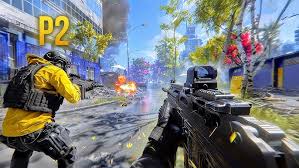Mastering Game Pong in C: Common Questions and Insights
Content:
Pong is one of the earliest examples of video games, and implementing it in C can be a rewarding project for beginners and experienced programmers alike. However, newcomers often face challenges while learning how to create this classic game. Below are some common questions about developing Pong in C, along with insights to help you master the process.
1. What is Pong, and why should I develop it in C?
Pong is a simple table tennislike game where two players control paddles to hit a ball back and forth. It’s a great starting point for learning game development because it involves basic physics, collision detection, and user input. Developing Pong in C allows you to understand lowlevel programming concepts while still using a highlevel enough language to handle graphics and game logic efficiently.
2. What are the key components of a Pong game in C?
To create a Pong game, you’ll need:
Graphics library: Use libraries like SDL (Simple DirectMedia Layer) or ncurses for terminalbased Pong.
Game loop: A loop that continuously updates the game state and renders graphics.
Paddle and ball physics: Code to move the paddles based on user input and detect collisions.
Scoring system: Logic to track points when the ball misses a paddle.
3. How do I handle user input for the paddles in C?
For a terminalbased Pong, you can use keyboard inputs (e.g., W and S for up/down) or mouse inputs for a graphical version. Libraries like SDL simplify this by providing event handling functions. Here’s a simple example using ncurses:
“`c
if (key == w) {
paddle_y = 10;
} else if (key == s) {
paddle_y = 10;
}

“`
4. What challenges should I expect when implementing collision detection?
Collision detection in Pong involves checking if the ball intersects with the paddles. A common approach is to use bounding box collision:
“`c
if (ball_x paddle_x &&
ball_y paddle_y) {
// Collision detected! Reverse ball direction.
}
“`
However, for more cision, consider using circlepaddle collision.
5. How can I optimize the game loop for smooth gameplay?
To ensure a consistent frame rate, use fixed time steps and cap the frame rate (e.g., 60 FPS). Libraries like SDL provide builtin timing functions. Here’s a snippet:
“`c
while (game_running) {
handle_events();
update_game();
render_game();
SDL_Delay(16); // ~60 FPS
}
“`
Sharing Insights
opponents.
Conclusion
Developing Pong in C is a fantastic way to learn game development fundamentals. By addressing common questions like input handling and collision detection, you can build a solid foundation for more complex projects. Happy coding!

